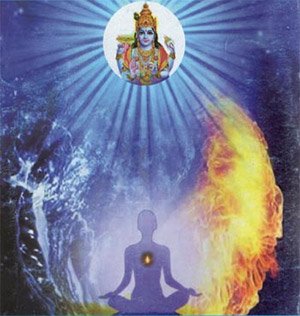Siddhanta Sangraha of Sri Sailacharya
by E. Sowmya Narayanan | 2008 | 30,562 words
Siddhanta Sangraha Chapter 27 (English translation), entitled “the classifications of perception” as included in the critical edition and study. The Siddhanta Samgraha is a Sanskrit philosophical text dealing with Vishishtadvaita in five hundred Sanskrit verses. It was written by Shri Shailacarya (18th century) and closely follows the philosophy of Vedanta Deshika (13th century).
Chapter 27 - The Classifications of Perception
241. Any other pramāṇās other than these can be included in the above mentioned three. The serious person desirous of knowing dharma should accept these three pramāṇās, namely, pratyakṣa, anumāna and śabda.
242-243. This is the statement of the great sage Manu. That which is not helpful in knowing dharma where the question of its validity is? Based on the experience experienced from the objects that are perceived such as paśu, prajā etc., the Vedic rituals are stated as truth and by the observance of the futile nature in the karmas which are not accepted by the Vedas it is replied that it is not so. Thus, the truthful and untruthful elements are to be understood.
Conclusion:
 This concludes The Classifications of Perception according to Vishishtadvaita philosophy explained by Shri Shailacarya. This book follows the model of Vedanta Deshika although the Vishishta Advaita school was originally expounded by Shri Ramanuja. Vishishta-Advaita is one of the various sub-schools of Vedanta which itself represents one of the six orthodox schools of Hindu Philosophy. They highlight the importance of the Upanishads, the Bhagavad Gita and the Brahma Sutras.
This concludes The Classifications of Perception according to Vishishtadvaita philosophy explained by Shri Shailacarya. This book follows the model of Vedanta Deshika although the Vishishta Advaita school was originally expounded by Shri Ramanuja. Vishishta-Advaita is one of the various sub-schools of Vedanta which itself represents one of the six orthodox schools of Hindu Philosophy. They highlight the importance of the Upanishads, the Bhagavad Gita and the Brahma Sutras.
